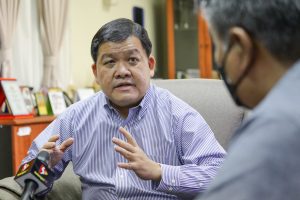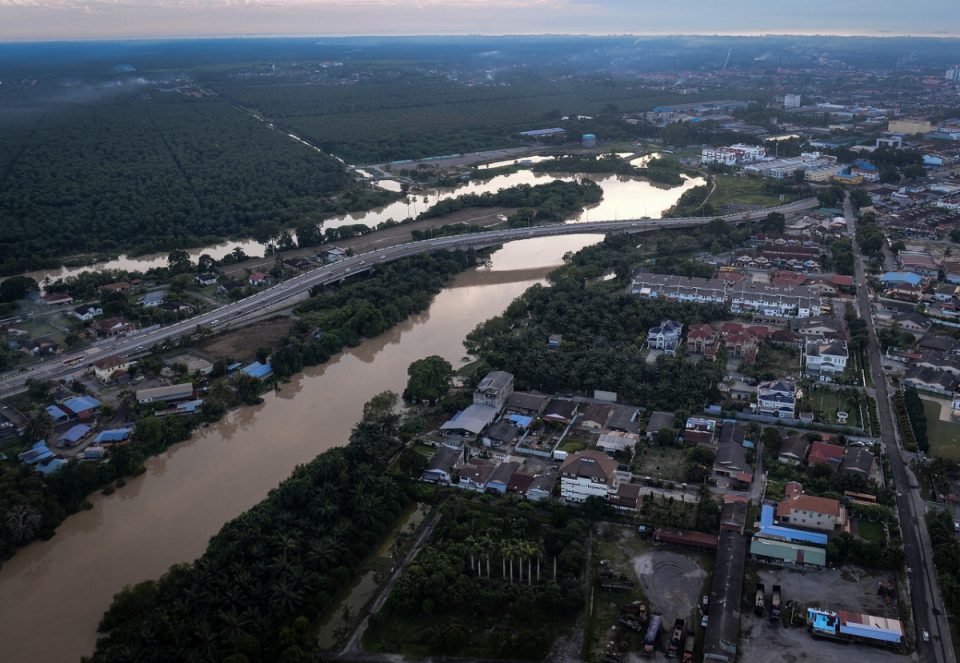By Alang Bendahara
AS the most progressive state in the country, Selangor has always taken the lead in all its pursuits, from matters relating to the economy to technology and digitalisation. Now it intends to do the same for the environment.
A month after the devastating December 18, 2021, floods that crippled the Klang Valley, Menteri Besar Dato’ Seri Amirudin Shari announced on Jan 24 that a special committee would be set up to address issues relating to climate change.
Amirudin said the committee would be tasked to formulate strategies to prepare for future disasters and scrutinise other side effects of climate change, such as the price of food and raw materials, to ensure the wellbeing of the people.
In conjunction with World Meteorological Day on March 23, Selangor Journal interviewed Tourism, Environment, and Green Technology Committee chairman Hee Loy Sian who is now in charge of the new portfolio on climate change.
Back in focus

After the 14th General Election, the entire component of the Ministry of Science, Technology and Innovation (Mosti), the energy and green technology sector of the Ministry of Energy, Green Technology and Water (KeTTHA) and the Environment Management and Climate Change Division of the Ministry of Natural Resources and Environment (NRE) have been restructured to form the Ministry of Energy, Science, Technology, Environment and Climate Change (Mestecc).
After several leadership changes, the climate change portfolio was then dropped from the revamped ministries and is currently under the Ministry of Environment and Water (Kasa).
“During the Pakatan Harapan-led government, there was a portfolio for climate change in the ministry in charge of the environment at the Federal level. So we have always been concerned about this issue even though the previous government never gave focus to the issue,” Hee told Selangor Journal.
“After last year’s flood, experts and members of the public urged us to look again at climate change as it impacts on the environment, causing especially an increase in temperature.
“So now I think Selangor is the only state in the country to have a Standing Committee for Climate Change. The Federal government used to have it but disassembled it,” Hee said.
Existing projects
Hee said that even before announcing the new portfolio, Selangor had already initiated several policies and initiatives to reduce carbon emissions.
“Climate change is related to carbon emissions, so it is an environmental issue. Some of our focus, such as adopting the Low Carbon City Framework (LCCF) for the local councils, relates to it. My other portfolio on the environment and green technology also addresses this issue,” he said.
With a yearly allocation of RM3 million for the environment and RM2.5 million for green technology, Hee said they had implemented various projects and initiatives to address climate change in all 12 local councils and nine districts as well as worked with multiple government agencies and non-government organisations.
Among the initiatives taken are a 25-year moratorium on logging in the state from 2010 until 2035 and the installation of solar panels in a collaborative effort with TNB at the Selangor State Secretariat Building and nine District Land and Mines Offices which will be completed this year.
“We have also built large-scale solar farms on disused lakes in Kuala Langat and are in the midst of approving more large-scale farms in Selangor to support renewable energy initiatives,” he said.
Hee said that Selangor is also planning to reduce landfills as currently 100 per cent of the state’s waste goes there, posing a fire hazard and a risk of leaching that can pollute rivers and underground water.
“Selangor produces 7,000 tonnes of domestic waste every day, so we want to reduce our dependence on landfills. Soon, we will build waste-to-energy plants that can incinerate waste to produce electricity.
“The first plant will be at the Jeram landfill with a capacity of 1,000 tonnes, the second will be at the same site, while the third will be built in Tanjung 12. State government-owned Worldwide Holdings will undertake these projects,” he said.
In addition to that, Hee said they have also received an application from a Federal government-linked company interested in building a waste-to-energy plant in Rawang.
Hee said the state supports the Montreal Protocol on Substances that Deplete the Ozone Layer, which is in line with the Low Carbon City Framework and the state government’s effort to reduce carbon dioxide emissions to 40 per cent by 2030.
“The Selangor government will also give priority to buying products that are certified as green-friendly,” he said.
Engaging experts
Hee, who is now state executive councillor for tourism, environment, climate change and green technology, and Orang Asli affairs, said the inclusion of the new portfolio would have a significant impact on the state and its citizens in the long run.
“We will establish a council headed by scientists and experts on climate change including professors and NGOs to discuss and frame strategies to identify its causes and how we can reduce carbon emissions in Selangor, as well as how to overcome the causes of floods,” he said.
So far, responses from some of the experts have been encouraging and they will continue to engage more in the coming months.
Hee said he would apply for additional funds for the new portfolio, in the range of between RM500,000 and RM1 million.
“We will be researching to gather data on areas like the level of carbon emissions coming from vehicles, factories, power plants and others. In the case of climate change, people will not get to see its impact in the short term as there is a need for research to collect the data.
“We cannot expect the council and committee to get it all done in three months. To obtain the data the experts need to conduct experiments on the weather, tides and the carbon emissions in the Klang Valley.”
Hee, however, expects data to start coming in from six months to a year.
“Once some data is available, the committee will sit down and discuss ways to overcome our problems and make recommendations on policies that the state government can adopt,” he added.
This article first appeared in the Selangor Journal monthly March edition, published on February 28, 2022





